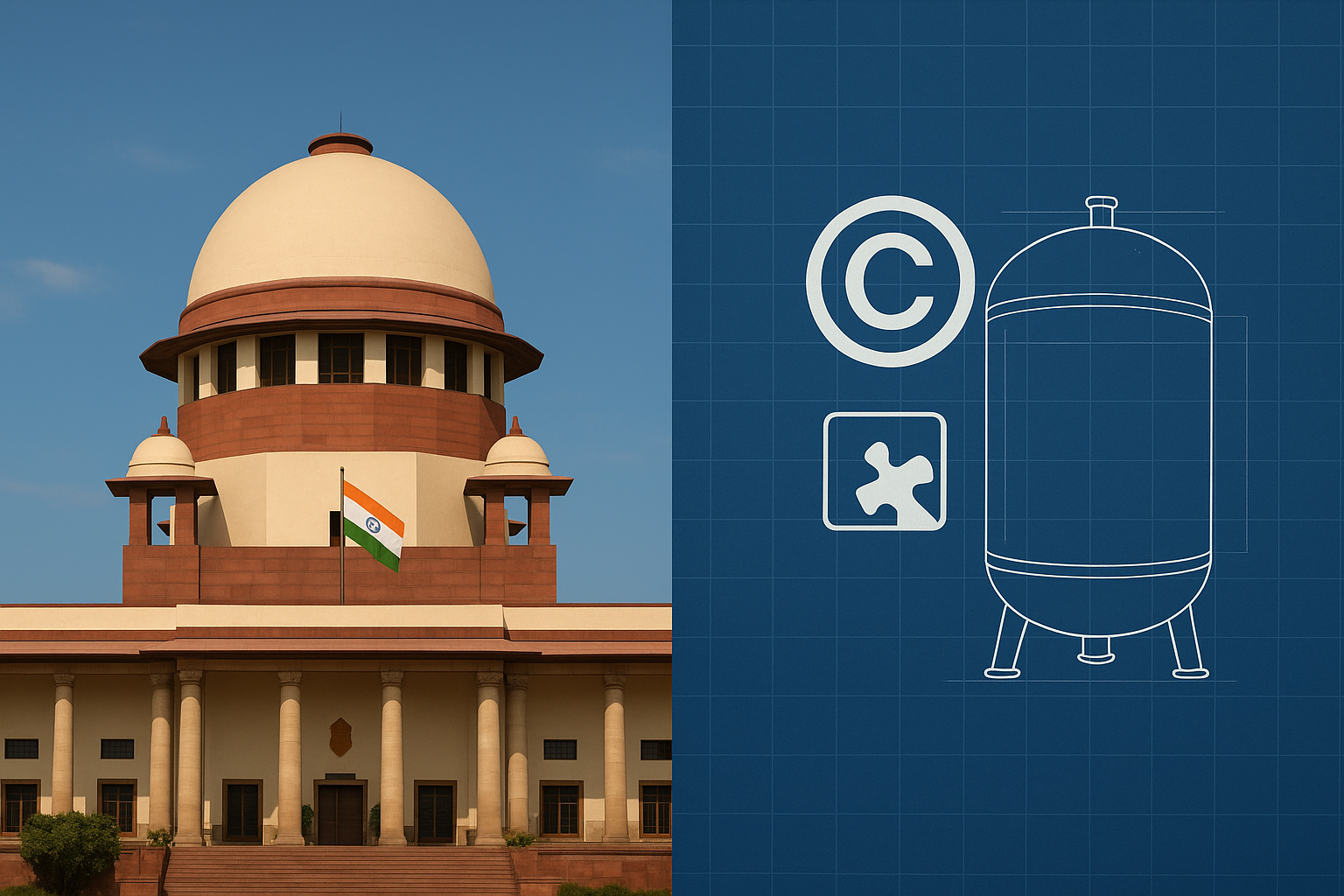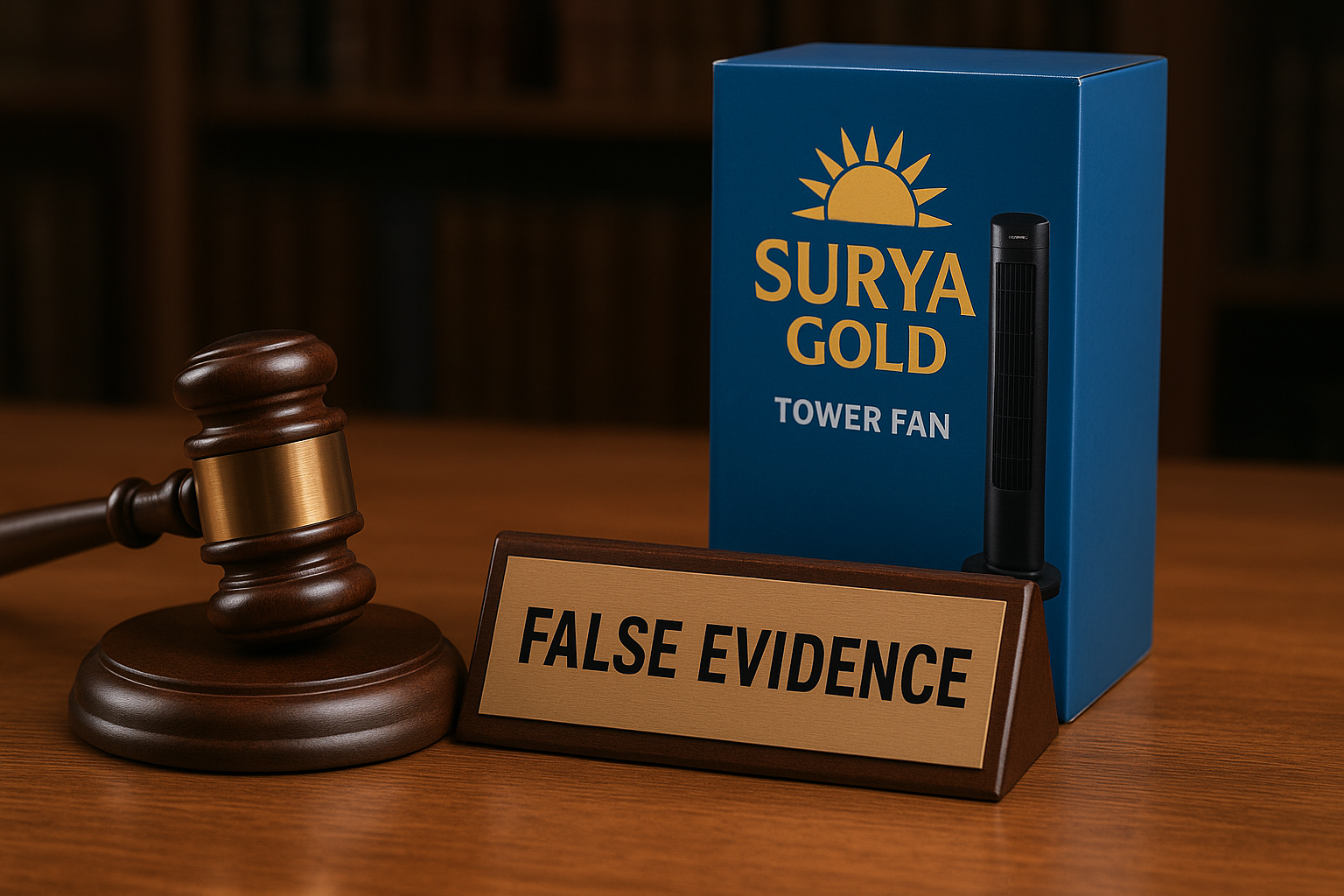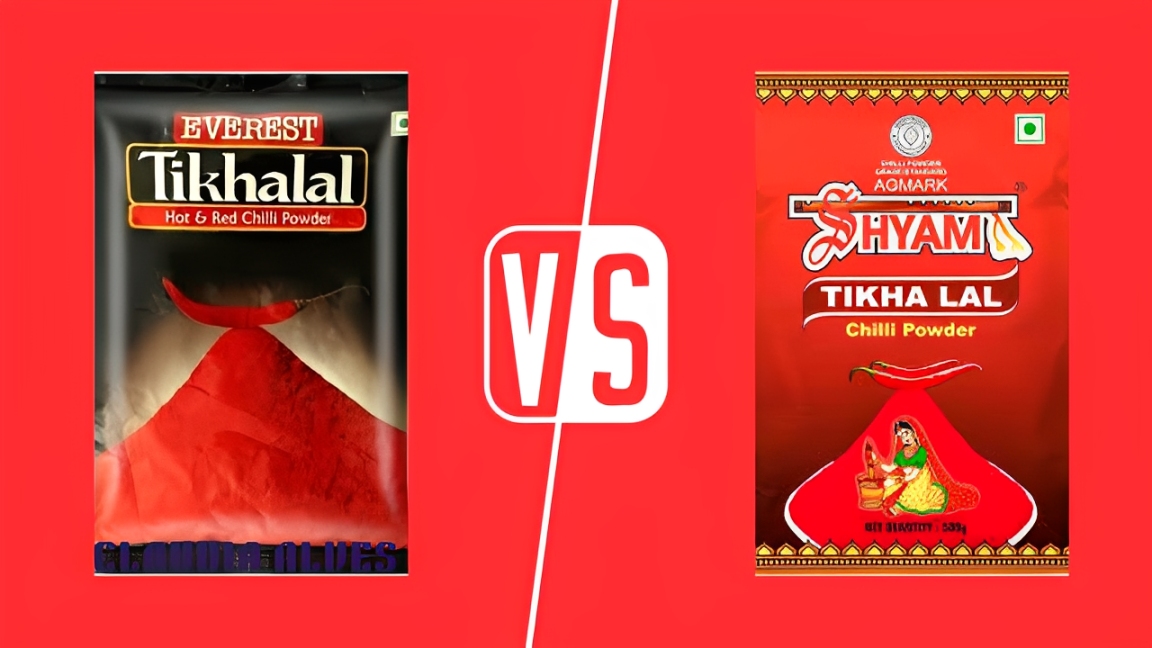
Cryogas Equipment Private Limited v Inox India Limited & Others
INTRODUCTION
In April 2025, the Supreme Court of India issued a landmark judgment in Cryogas Equipment Private Limited v. Inox India Limited & Others, providing critical clarity on the intersection of copyright and design protection for industrial works. The ruling is a turning point for Indian intellectual property (IP) law, especially for sectors where engineering, artistry, and mass production overlap.
THE ORIGIN OF THE DISPUTE (2018)
The conflict began in 2018 when Inox India Limited, a well-known manufacturer of cryogenic storage tanks, filed a civil suit against Cryogas Equipment Pvt Ltd and LNG Express. Inox alleged that its proprietary engineering drawings used to produce cryogenic tanks had been unlawfully copied and used by Cryogas and LNG Express. Claiming copyright infringement, Inox sought a permanent injunction, destruction of infringing material, and damages worth Rs. 2 crores. The drawings, Inox argued, were “artistic works” under Section 2(c) of the Copyright Act, 1957, and thus entitled to copyright protection despite their technical nature.
BACKGROUND OF TRIAL COURT DISMISSAL
Cryogas contested the suit by invoking Section 15(2) of the Copyright Act. This provision limits copyright protection for artistic works that are applied to industrial products and reproduced more than 50 times without being registered under the Designs Act, 2000. The commercial court in Vadodara accepted this argument and dismissed Inox’s case under Order VII Rule 11 of the Civil Procedure Code. It held that since the drawings were used for manufacturing industrial goods (cryogenic tanks) and had exceeded the 50-unit threshold, they lost copyright protection due to non-registration under the Designs Act.
HIGH COURT REVERSAL (2024)
Inox appealed this dismissal before the Gujarat High Court. In a significant ruling in 2024, the High Court set aside the Vadodara Commercial Court’s dismissal order. The High Court held that the question of whether the drawings were truly “artistic works” under the Copyright Act, or whether they had lost protection due to their industrial application and reproduction, involved complex factual determinations that could not be resolved at the preliminary stage.
Specifically, the Court emphasized that:
- The nature of the drawings—whether they had independent aesthetic value apart from their functional utility—required evidence.
- The precise number of times the design had been reproduced was a matter of factual inquiry.
- The applicability of Section 15(2) could only be determined after full trial.
Accordingly, the matter was remanded to the trial court for a detailed examination on merits, paving the way for further proceedings.
SUPREME COURT’S INTERVENTION AND THE “TWIN-TEST” (2025)
The case reached the Supreme Court in 2025, where Justices Surya Kant and K.V. Viswanathan crafted a critical framework to resolve the copyright design overlap. The Court introduced a “twin-test” to determine whether a work is entitled to copyright or should be protected under design law:
- Artistic Evaluation: Is the work an “artistic work” as per the Copyright Act?
- Industrial Application: Has the work been applied to an article through any industrial process and reproduced more than 50 times?
If the answer to both is “yes,” and the work is unregistered under the Designs Act, it forfeits copyright protection.
In applying this framework, the Court acknowledged that Inox’s technical drawings could involve original artistic skill, but their use in manufacturing cryogenic tanks introduced a functional and industrial dimension. However, since key facts like the number of reproductions and the extent of functionality were disputed, the Court reinstated the suit for a full trial.
COMPARATIVE ANALYSIS CITED IN JUDGEMENT: U.S. SUPREME COURT’S APPROACH
India’s Twin-Test framework aligns in spirit with U.S. jurisprudence, notably the U.S. Supreme Court’s 2017 decision in Star Athletica, LLC v. Varsity Brands, Inc., which addressed whether design elements on cheerleading uniforms could be copyrighted. The U.S. Supreme Court held that for a design to be eligible for copyright: It must be perceptible separately from the utilitarian article. It must be capable of existing independently as a work of art. This case established a “separability” test, echoing concerns similar to India’s: how do courts distinguish between artistic expression and functional utility?
In both cases, the core issue is the dual nature of industrial works: useful yet creative. While India’s test focuses more on reproduction and registration, the U.S. test hinges on the independence of artistic features from the functional object. While the U.S. Supreme Court uses a “separability test” to determine if a design can exist independently of a useful article, India’s twin-test is reproduction-centric and tied to statutory thresholds. Nevertheless, both systems reflect the challenge of delineating where utility ends and creativity begins. A key takeaway from both frameworks is the judicial acknowledgement that industrial products can simultaneously carry utilitarian and artistic elements, necessitating a nuanced legal approach.
The decision also spotlights broader policy gaps in India’s intellectual property regime. Currently, copyright, design, and patent laws operate in largely separate silos, with overlapping scopes that can create legal uncertainty. Experts are now calling for IP law reform, including a possible single-window registration system for hybrid works and a centralized IP tribunal to resolve intersecting disputes. There is also a growing consensus that Section 15(2) of the Copyright Act requires clearer language particularly regarding what counts as “application to an article” and how to define “industrial process” in the digital and additive manufacturing age.
LOOKING AHEAD: THE NEED FOR IP REFORM?
This case highlights the urgent need to streamline and unify India’s fragmented IP framework, especially in areas where copyright, design, and even patent law intersect. Many stakeholders are now advocating for a single-window registration system for hybrid works. Legislative amendments to better define boundaries between IP categories and Enhanced training for judiciary and industry professionals on modern IP complexities.
CONCLUSION
The Cryogas Equipment Pvt Ltd v. Inox India Ltd case is more than a corporate dispute it is a cornerstone in Indian intellectual property law. By drawing a clear line between artistic creation and industrial functionality, the Supreme Court has enabled courts and businesses to make more informed, legally sound decisions. As the matter now returns to trial, its legacy in shaping India’s IP landscape is already secured.




Leave a Reply